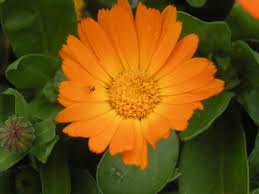Phytotherapy means the use of herbs and the products obtained from them for prevention and treatment of different diseases. The use of herbs in curing diseases is an ancestral method, related to the beginnings of the existence of the human species on Earth, when the primitive man observed the animals, which were choosing different plants for alleviation of certain sufferings. Herbs were used by the old Indians, Chinese people, Egyptians, Greeks, Romans, Jews, Arabs, etc. and represented for thousands of years the therapeutic basis for obtaining medicines. Nowadays about 1/3 of the allopathic medicines are derived from herbs, but they are obtained by synthesis or biosynthesis, in order to technologically and economically optimize the excerpt of active principles. The most-known herbs are: arnica, chamomile, milfoil, tutsan, celandine, hawthorn, blueberry, black berry, artichoke, thistle, valerian, marigold, balm, hyssop, liquorice, nettle, brier, dandelion, plantain, burdock, willow, oak, salvia, dock, bramble, Chinese green tea and many other indigenous and exotic plants.
Plants can be harvested from the spontaneous flora in geographical areas, which are ecologically well protected and where it is being cared for in order to avoid the extinction of certain species. The spontaneous flora of Romania is extremely rich in species and there are many pure ecologic areas, from where herbs with good effects for the prevention and cure of certain diseases can be harvested in good conditions.
In order to prevent the extinction of certain herbs of the spontaneous flora, they are cultivated on vast areas and under well-controlled agro technical conditions. The most valuable plants used for therapeutic purposes are those ecologically cultivated, without the use of pesticides, herbicides or chemical fertilizers. These chemical substances are not to be found in good phytotherapeutic products, which are for the use of little children, old people or chronic patients.
Out of herbs harvested from the spontaneous flora or cultivated, naturally or artificially dried we can obtain different pharmaceutical forms for the inner or outer use, such as: simple or composed teas, tinctures, extracts (fluid, soft or dried), aromatic water, syrups, powder, tablets, capsules, ointments, creams, gels, etc. Thus, the active principles of herbs are integrated in bio-disposable pharmaceutical forms, of great therapeutic efficiency and which confer them physical-chemical and micro-biological stability.
Herbs have different therapeutic effects, such as: anti-microbial, antimycotic, anti-inflammatory, antiemetic, choleretic, cholagogue, hepatic-protective, diuretic, sedative, laxative, cicatrizating, emollient, fortified, etc., which cover a large range of diseases and symptoms.
The phytotherapeutic products, which are obtained from herbs can be successfully used in a series of diseases as: diseases of the cardio-vascular system (arterial hypertension, ischemic cardiopathy), diseases of the gastric-intestinal system (gastric and duodenal ulcer, colitis, enteritis, diarrhea of different etiologies), hepatic-bilious diseases) hepatitis, hepatic insufficiency, cholecystitis), diseases of the urinary system, diseases of the locomotive system, metabolic diseases (obesity, diabetes), diseases of the skin and the superficial body growth (eczemas, dermatitis, acne, hyper-seborrhea, difficulty curable wounds, varicosed ulcer, alopecia, mycosis), diseases of the genital system (candida infections, vaginitis, erosion of the cervix, etc.)
